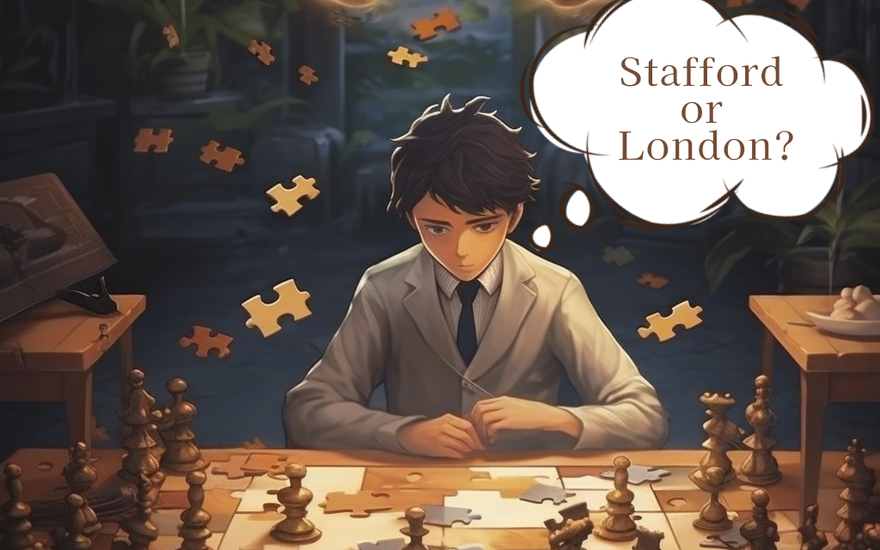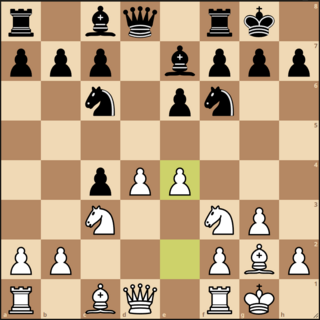
Build Your Unique Repertoire
Do you think it's wise to play the same repertoire as your coach or purchase a random course? Here is how to create a repertoire that fits YOUR unique style.Openings. So much information online... So many books have been written...How can you even choose something? In this article, you will learn how to choose an opening you may need to change and what metrics you may use to assemble a complete repertoire. + Pros and Cons for various studying methods.
Should you pick openings randomly and create an 'Opening Frankenstein'? Or should you buy a course from a strong player who may give you engine lines without any reasonable explanation? Another option is to hire a coach. However, have you ever had someone suggest using lines they've been using for years, but those lines don't align with your personal style and seem outdated?
I've been fixing many repertoires for my students who have experienced all these problems for several years. This article is my attempt to improve yours.
First, let's discuss what makes openings different and why finding ones that suit you is important.
Remember, every opening has its temper!
The Temper of an Opening
I don't think that anybody can argue that you are not supposed to play Dragon and Petroff the same way. In one case, you mostly try to play actively and attack. In another case, you mostly have to stabilize and play positional sound moves.
What do you think about your memory? If you struggle memorizing lines, you probably shouldn't play Najdorf and choose the Breyer line in Ruy Lopez instead. Or, if you have an amazing memory, you should use it and play the most engine-moves-loaded lines instead of solid and maneuvering.
How much time do you have to study chess? If not much, maybe you should build a narrow repertoire with as few options for your opponent as possible and many transpositions to similar structures.
And so on...
Now, let's move on to steps that you can take to improve your Repertoire.
(If you are new to chess and have not yet played any openings, I would like to direct you to another article where I offer suggestions for a beginner's repertoire.)
Identifying
Try to answer these questions:
1. What openings do you enjoy the most? Why?
2. What openings are the most difficult for you? Why?
Typically, a coach is instrumental in finding patterns and connecting your answers. However, this self-reflection can be useful for you as well.
Now it's time to go on the website called www.openingtree.com
Search for your games and look at the percentage you score in different openings. Try to find some similarities between your best and worst openings.
Rarely do I see people who have to change the whole repertoire; mostly, it is about 1/3.
The percentage itself isn't necessarily a decisive factor. Sometimes, the opening may fit you, but you choose a weird line (that isn’t good) because somebody recommended that. Nevertheless, this tool is available for you and can be helpful.
Choosing a New Line
To choose a new line and assemble all the parts, you need to categorize all opening lines using those metrics:
- Aggressive / Solid (What type of candidate moves are more likely to be correct)
- Concrete / Maneuvering (In other words, relying heavily on memory or not)
- Mainstream / Sideline (Studying rare lines is more difficult due to lack of information)
For example:
Catalan with long-term sacrifices on c4 (fashionable now) - is 1)Aggressive, 2)Maneuvering, 3)Sideline (still not many games).

Or, Petroff: 1)Solid 2)Concrete 3)Mainstream. Etc...

Notice that sometimes the same opening may consist of different concepts inside. You can play the Catalan solidly (then choose respective lines) or aggressively.
Once you categorize openings that give you the best scores, it is time to substitute the remaining ones. Finding new openings can be difficult because it is tough to categorize openings where you don’t have any experience. Here you may look for some assistance. It can be a coach or a strong friend with experience playing different lines. Also, you may try to use an engine. Just check what move in an opening it mostly suggests: solid or active? Also, you can pay attention to the number of candidates moves with similar evaluations. If there are many - the line is more likely to be a maneuvering one; if there is a big gap between the first line and the others, then the line is likely more forced.
In my case, I may sometimes suggest certain lines that don’t fit a style on purpose and temporarily practice weak areas of the game. When it happens, I tell beforehand. But if these things are done without a purpose, and you get to play an 'Opening Frankenstein' on a long-term basis... Well, that’s a clear red flag for you.
Studying
Let’s say you have an idea about openings you decided to add to your repertoire.
What is next? How to learn them?
These are your options:
- Buy a book
- Hire a coach
- Buy a course
(Yeah... a free-to-play game indeed...) - Read articles online
- Watch videos on youtube
- Check streams with Speedrun
- Analyze with an engine and a database
True, there are some free options.
Let’s address each one separately:
Books
- Benefits: Structural approach. Usually, not only lines but also explanations and typical games. You can research whether an author has experience playing the opening or not. Useful to learn basic ideas and plans.
- Drawbacks: Writing a book takes a lot of time and can be outdated quickly (which is not a problem if you are not looking for novelties). You don’t know what resources (games, engine quality) were used to write it. Fee-paying
Coach
- Benefits: Individual approach. Potentially prepared files specifically for you. The coach may help you to identify what openings fit you. If something needs to be clarified - you can always ask a question. You can ask about the resources that were used to create a file.
- Drawbacks: The coach may have no experience or files in an opening you want to play and a very narrow repertoire. Often very costly.
Courses
- Benefits: Structural approach. Usually, explanations of reasons behind moves. You can research the author before you purchase if you like.
- Drawbacks: Often not objective (surprising suggestion rather than most sound). Typically, you don’t know what resources (games, engine quality) were used to create it. Fee paying.
Articles
- Benefits: Can be very specific (while writing a book or a course takes much time, the article can be about a particular line). Free
- Drawbacks: Enormously hard to find. No consistency (you cannot find an author who consistently writes about the same openings). Unknown resources
Youtube
- Benefits: Huge database, relatively easy to find a video. Authors that consistently publish videos on the same openings that they are passionate about. Not only moves but also ideas. Free
- Drawbacks: Typically, you don’t know what resources (games, engine’s quality) were used to create a file for the video. Often not objective (surprising suggestion rather than most sound). Lack of material about standard openings (mostly weird gambits).
Streams
- Benefits: You can find a person playing the same opening. Because of the playing process, you also learn many middlegame ideas common to the structure. Free
- Drawbacks: Often no structure at all. People tend to play lines that give good results (sometimes lines can be effective in blitz/bullet but are not sound in the engine’s evaluation and will fail in longer time controls).
Analysis
- Benefits: You know exactly what resources were used to create a file and how much time was spent. Typically this is one of the most effective approaches if you know how to do it.
- Drawbacks: Hard to do without experience(How to use engines, how to analyze games, what should be the structure of a file, etc.). If you want to use strong engines - you have to pay.
As you can see - there are many ways to learn an opening. All of them have benefits and drawbacks. But what is an important takeaway - you can select ones that will work in your circumstances.
Conclusion
The two most difficult steps are identifying an opening that you should change and finding one that will work better because categorizing openings can be difficult without experience. If you can’t manage to do it yourself, try to find a more experienced player that can help you. However, remember, If an opening works amazingly for one player, that doesn’t mean it will work for everybody!
Thank you for taking the time to read until the end. If any parts were confusing for you, please feel free to comment, and I will do my best to clarify.
I hope you will soon find openings that suit YOUR style!
GM Gordievsky Dmitry, 'Gordima'
Follow me for more content: https://taplink.cc/gordima.




